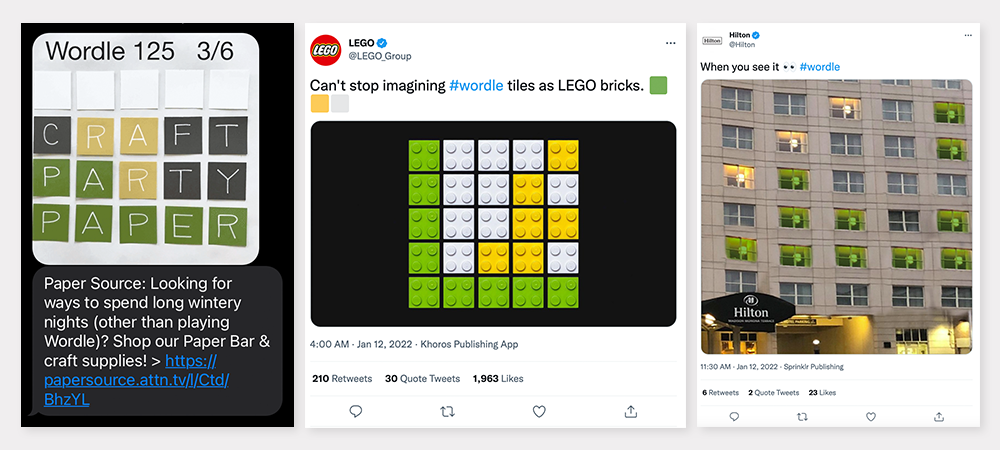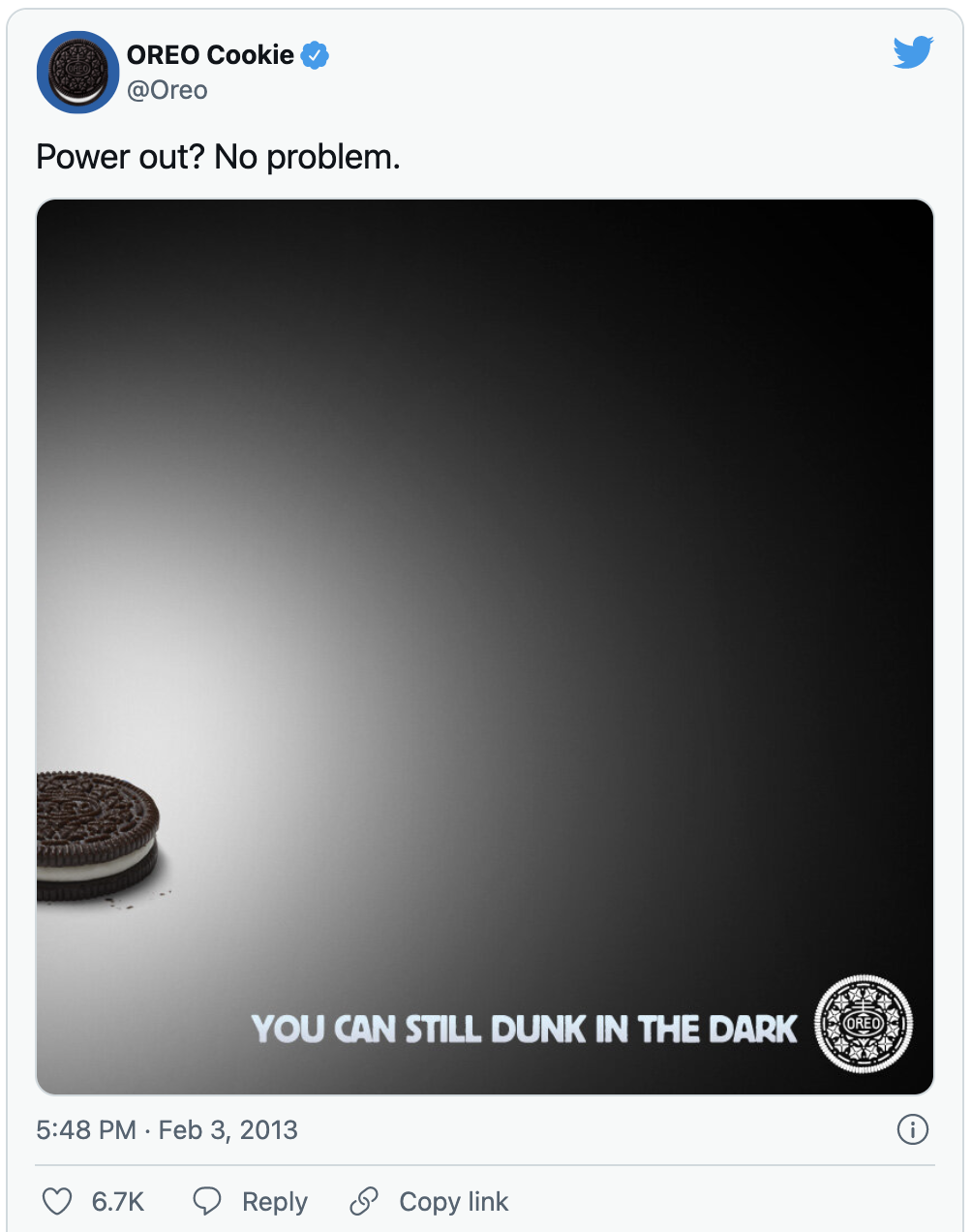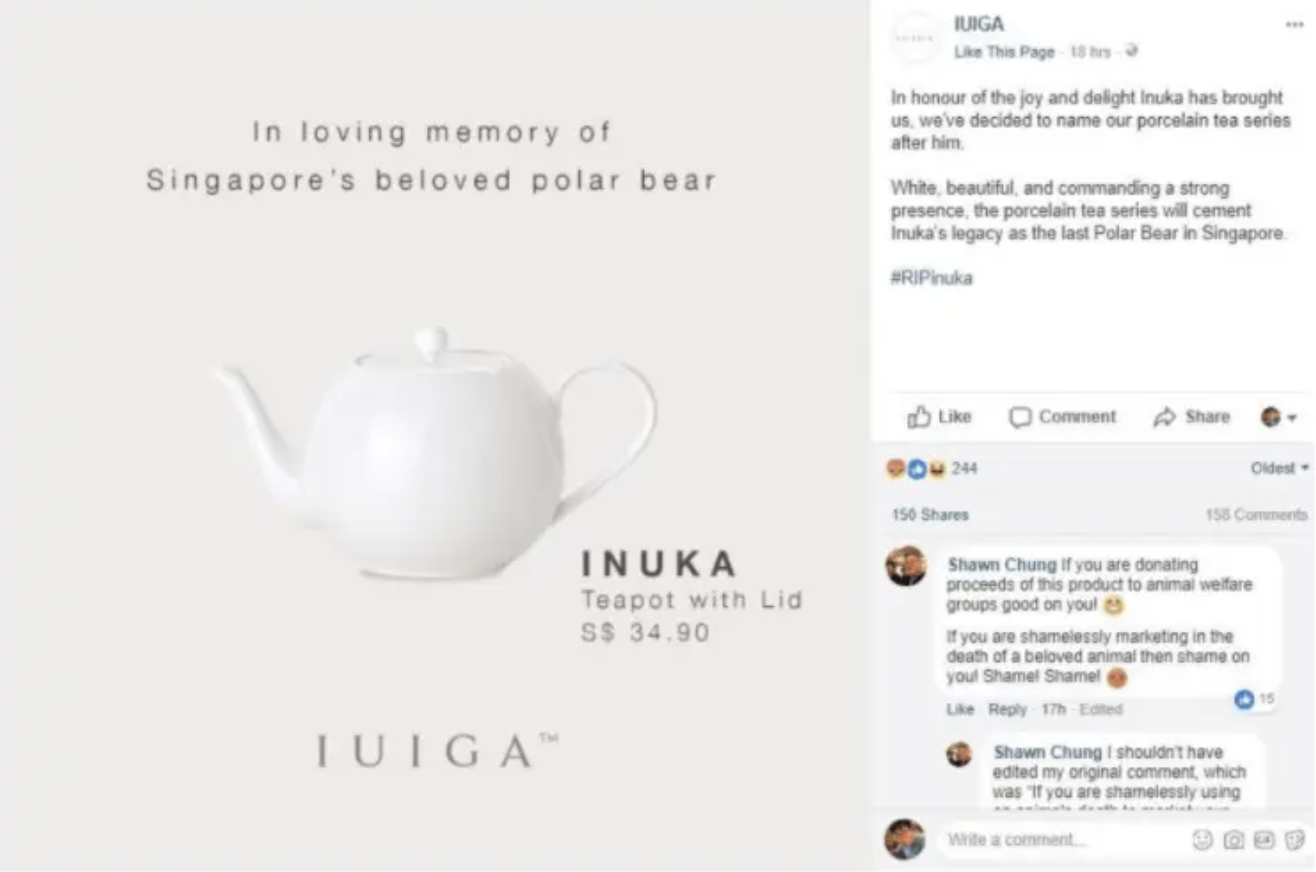The word game, Wordle, has become a global phenomenon. By now, we’re all familiar with those 30 ominous squares, filled with gray, green, or yellow, that determine your mood for the rest of the day. The virality of this simple game has spanned across countries, generations, and platforms, gaining attention on social media and late-night television. And, unsurprisingly, because of its popularity, Wordle has also captured the attention of marketers.
Marketers, from a variety of brands (yes, including Iterable—hi), have noticed the traction Wordle has gained and decided to use it to their advantage. This is known as trendjacking. According to Trendjackers.com, “[Trendjacking is] a quick and relatively simple method of gaining free exposure by ‘jacking’ a trend or ‘riding the wave’ of a hashtag [that] became a commonplace tactic for social media marketers.” Brands are using Wordle in their marketing techniques to relate and connect with audiences in a new way.


From left to right: 1) Paper Source sent this GIF via SMS marketing to quickly get customers’ attention. 2) Lego turned Wordle squares into Lego bricks to tie their brand to the trend. Source: Twitter. 3) Hilton cleverly turned one of their hotels into a giant Wordle game. Source: Twitter.
From these examples, we have proof that brands are into trendjacking but, as we saw all of these examples pop up, we started wondering if it really works. Are there benefits to trendjacking? How can brands effectively hop on trends? Well, let’s get into it by starting at the beginning.
How Trendjacking Started
To think about how trendjacking started, we have to think about how trends started. Enter: the hashtag. In 2007 hashtags were originally introduced via Twitter as a way to categorize content. While hashtags were initially met with some resistance, “In 2009, Twitter finally embraced them and introduced a search tool, so that users could see who else was using a particular hashtag. The following year Twitter introduced ‘Trending Topics,’ which displays the most popular hashtags at a given time.”
Trending topics got the ball rolling for trendjacking. Once brands could see what everyone was talking about, it became easy to get involved in the conversation. When there’s a moment that enters the zeitgeist, brands aim to natively fit into the narrative. Remember the power outage during a certain sporting event? Remember the iconic tweet from Oreo? Trendjacking at its finest.


Oreo saw the conversations that were happening on Twitter and wanted to be a part of them. Source: Twitter.
While Oreo’s tweet was a hit, this isn’t always the case for trendjacking brands. Becoming involved in the conversation in the wrong way can bring attention to your brand for all the wrong reasons.
A Double-Edged Sword
Trendjacking can do as much harm as good in a short amount of time. Trendjacking is almost a guarantee that whatever content your brand throws into the mix will be seen by at least a handful of people. So, while the execution has to be quick—to ensure the trend is still a trend when the content goes live— it also has to be well thought out. If all interpretations of your message are not considered, your content could go viral for all the wrong reasons.
Today, customers are smarter than ever and can easily sniff out inauthentic marketing. If your brand is hopping on a trend, just for the sake of hopping on a trend, without any connection to your brand whatsoever, it’s going to go over like a lead balloon.
In 2018, Iuiga, a homegoods brand, tried to enter the conversation around the passing of Singapore’s polar bear, Inuka.


Trying to capitalize on a tragedy is known as “black hat trendjacking” and Iuiga’s customers were not pleased. Source: Equinet Academy.
Trends are short-lived. They’re gone as quickly as they appear and you never want your brand’s poor attempt at trendjacking to last longer than the trend itself. Trendjacking ensures eyeballs on your brand, but jumping on a trend has to have a purpose—especially today. There needs to be brand relevance and thought behind every message your brand puts out. But, when it works, it really works.
Is Trendjacking Worth it?
Based on what we’ve discussed so far, trendjacking seems like a lot of work and kind of risky. Bringing attention to your brand is definitely playing with fire but the payoff, when done correctly, is worth it. Look at the Oreo tweet, for example. That tweet focused on a football game that happened nine years ago but is still used in marketing articles (~getting meta~) today.
Now, you’re probably thinking, “it’s great people are still talking about it, but what does that mean for the brand?” Plain and simple: it’s an awareness play. This is a way to get your brand name into the popular conversations that are happening at the moment.
No one was thinking about Oreo when the lights went out but, according to Valens Research, “Just a day after it was posted on Twitter, the tweet accumulated around 15,000 retweets, while the Facebook post recorded approximately 20,000 likes. The ‘Dunk in The Dark’ image also garnered USD 525 million earned media impressions.” If people didn’t know Oreo before, they know it now.
Do More Than Join a Conversation
Like we said before, your brand can’t be part of a trend just to get attention. No one likes a try-hard. It has to make sense. And, in a way, putting the thought and wit behind trendjacking is what makes it work.
Brands need to understand the trend fully and understand the combination of the audience of the trend and their own target audience. Who is talking about this subject? Do you, as a brand, want to connect with this group of people? Is this a trend your brand can relate to? Trendjacking is about more than just popping into a conversation and hoping your message becomes viral—it’s about being authentic, clever, and relevant.
To learn more about how your brand can connect with your audience via multiple marketing channels, schedule an Iterable demo today.
































